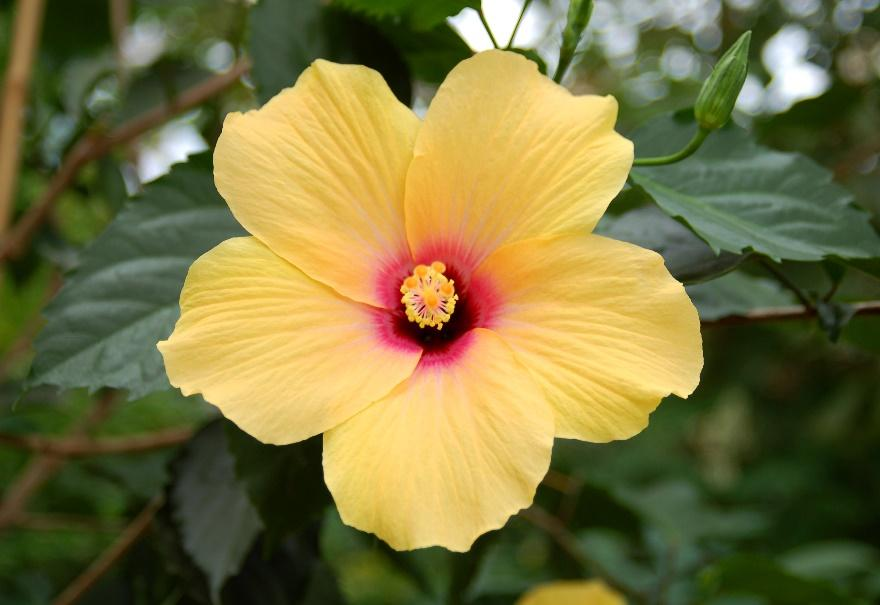
Give examples of the tetramerous and pentamerous flower.
Answer
431.1k+ views
1 likes
Hint: Merosity is referred to as the number of component parts in a distinct whorl of a plant. It basically denotes the number of sepals in a whorl of the calyx, the number of petals in a whorl of the corolla, or even the number of carpels in a whorl of the gynoecium. The term can also be used to refer to the number of leaves in a leaf whorl.
Complete answer:
A typical flower has a circular section with a common centre that can be clearly observed and distinguished from the top of the flower. The calyx is the outermost whorl of a flower that comprises sepals which are basically tiny leaves situated at the base of a flower. Corolla is the second whorl of a flower that comprises petals. Both the calyx and corolla are together called the perianth.
In a tetramerous flower, the floral parts are arranged in four or even multiples of four in such a way that each whorl of flower parts has four flower parts An example is Brassica juncea
The diagram below shows Tetramerous flower

In pentamerous flower, the floral parts are either arranged in five or even multiples of five. An example is Hibiscus, Dicots.
The diagram below depicts Pentamerous flower

Note: If all the whorls in a given floral arrangement have the same merosity, the flower is called isomerous, if the floral arrangement does not have the same merosity the flower is known as anisomerous. There are Trimerous flowers also where the floral parts are arranged in three or multiples of three, an example is Polyanthus.
Complete answer:
A typical flower has a circular section with a common centre that can be clearly observed and distinguished from the top of the flower. The calyx is the outermost whorl of a flower that comprises sepals which are basically tiny leaves situated at the base of a flower. Corolla is the second whorl of a flower that comprises petals. Both the calyx and corolla are together called the perianth.
In a tetramerous flower, the floral parts are arranged in four or even multiples of four in such a way that each whorl of flower parts has four flower parts An example is Brassica juncea
The diagram below shows Tetramerous flower

In pentamerous flower, the floral parts are either arranged in five or even multiples of five. An example is Hibiscus, Dicots.
The diagram below depicts Pentamerous flower

Note: If all the whorls in a given floral arrangement have the same merosity, the flower is called isomerous, if the floral arrangement does not have the same merosity the flower is known as anisomerous. There are Trimerous flowers also where the floral parts are arranged in three or multiples of three, an example is Polyanthus.
Latest Vedantu courses for you
Grade 11 Science PCM | CBSE | SCHOOL | English
CBSE (2025-26)
School Full course for CBSE students
₹41,848 per year
Recently Updated Pages
Master Class 11 Business Studies: Engaging Questions & Answers for Success

Master Class 11 Economics: Engaging Questions & Answers for Success

Master Class 11 Accountancy: Engaging Questions & Answers for Success

Master Class 11 Computer Science: Engaging Questions & Answers for Success

Master Class 11 English: Engaging Questions & Answers for Success

Master Class 11 Maths: Engaging Questions & Answers for Success

Trending doubts
Which one is a true fish A Jellyfish B Starfish C Dogfish class 11 biology CBSE

Difference Between Prokaryotic Cells and Eukaryotic Cells

1 ton equals to A 100 kg B 1000 kg C 10 kg D 10000 class 11 physics CBSE

One Metric ton is equal to kg A 10000 B 1000 C 100 class 11 physics CBSE

How much is 23 kg in pounds class 11 chemistry CBSE

Net gain of ATP in glycolysis a 6 b 2 c 4 d 8 class 11 biology CBSE




